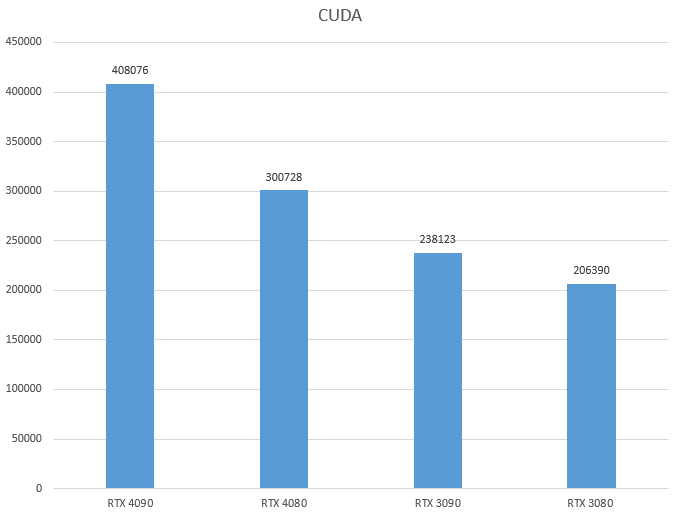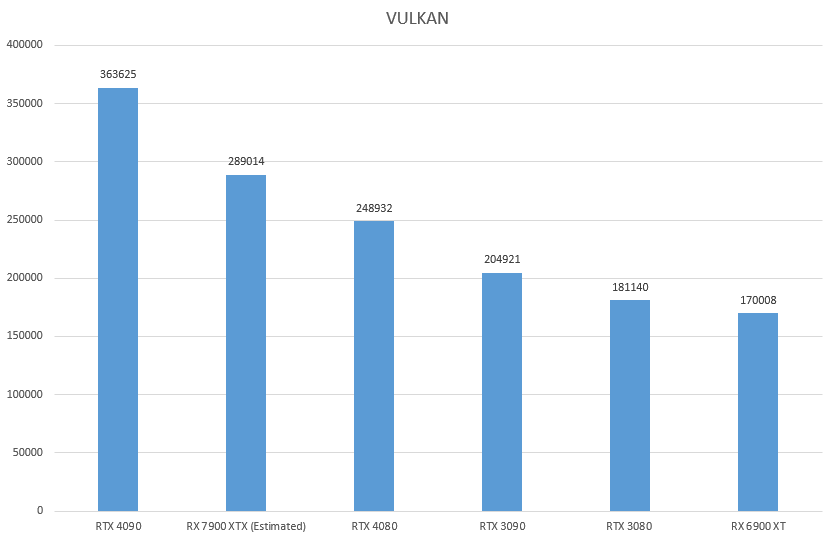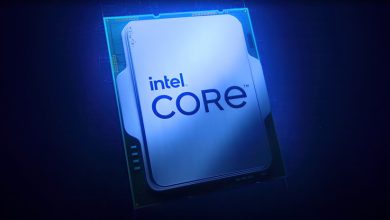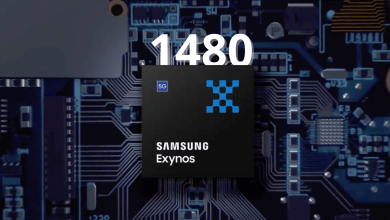NVIDIA RTX 4080 Benchmarked In Geekbench, Scores 25% Better Than The RTX 3090

The GeForce RTX 4080 is team green’s latest addition to their Ada Lovelace lineup. The RTX 4080 features the AD103 GPU along with 16GB of GDDR6X memory. While we still have around 10 days before this GPU retails, benchmarks have already surfaced showcasing what sort of performance you should expect. Over at Geekbench, the RTX 4080 has been tested in the CUDA, VULKAN, and OpenCL APIs.
The Test Bench
The same test setup was used for all these benchmarks. Therefore, it is safe to assume that they are all from the same source. Going into the specifics, we see AMD’s Ryzen 9 7950X paired with 32GB of RAM. As for the performance metrics, let us go over them one by one.
CUDA
Starting off with CUDA, which is exclusive to NVIDIA GPUs, the RTX 4080 scores 300728 points. This is a nice 45% improvement as compared to the RTX 3080. Across the board, it remains ahead of the pack because the only real competitor here is the RTX 4090.

VULKAN
Moving over to VULKAN, the RTX 4080 manages to score 289014 points. The RX 7900 XTX showcased here is assumed to be 1.7x faster than the 6900XT. That may not be the final result, but it can give us a rough idea of where RDNA3 stands. Interestingly, the RTX 4080 here loses to the 7900XTX despite being more expensive.

OpenCL
OpenCL sees the RTX 4080 manage to obtain 148838 points, marginally beating the RTX 3090. Interestingly, AMD’s 7900XTX is faster than even the RTX 4090 in this test. As for the RTX 4080, it offers a 7% improvement generation on generation against the RTX 3080. That’s kind of disappointing though the final reviews will tell the complete story.

RTX 4080
The RTX 4080 16GB is packed with 16GB of GDDR6X memory over a 256-bit bus where the effective bandwidth stands at a whopping 720GB/s. Such insane bandwidths can be achieved thanks to the 22.5Gb/s memory which is 20% faster than last-gen. The 4080 16GB is equipped with the state-of-the-art AD103 GPU and 9,728 CUDA Cores for that extra compute performance. To top it off, it consumes just 320W of power.
| SKU | Chip | FP32/CUDA | SMs | Max Clock | Cache | Memory Bus | VRAM | Memory Spec | Speed (Gbps) | TDP | |||
| RTX 4000 Titan | AD102-450 | 18432 | 144 | 3.0GHz+? | 96MB? | 384/382-bit | 48GB | GDDR6X | 24 | ~800W | |||
| RTX 4090 Ti | AD102-350 | 18176 | 142 | 3.0 GHz? | 96MB | 382-bit | 24GB | GDDR6X | 24 | 600W? | |||
| RTX 4090 | AD102-300-A1 | 16384 | 128 | 2.52GHz | 96MB | 384-bit | 24GB | GDDR6X | 21 | 450W+ (TGP) / 660W (Max TGP) | |||
| RTX 4080 Ti | AD102 | 14848 | 116 | 2.7 GHz? | 80MB? | 320-bit | 20GB | GDDR6X | 23 | 420W | |||
| RTX 4080 (16GB) | AD103-300-A1 | 9728 | 76 | 2.505GHz | 64MB | 256-bit | 16GB | GDDR6X | 22.5 | 320W(TGP)/ 516W (Max TGP) | |||
| RTX 4070 Ti (4080 12GB Revamped) (Could Be Different) | AD104-400-A1 | 7680 | 60 | 2.61GHz | 48MB | 192-bit | 12GB | GDDR6X | 21 | 285W (TGP) /366W (Max TGP)? | |||
| RTX 4070 | AD104-300? | 7168 | 56 | 2.61GHz? | 48MB? | 192-bit/160-bit | 12GB? | GDDR6X | 21? | 250W | |||
| RTX 4060 Ti | AD104 | 6656 | 52 | 3.2 GHz? | 40MB? | 160-bit | 10GB | GDDR6X (?) | 18 | 200W | |||
| RTX 4060 | AD106 | 4352 | 34 | 3.0 GHz? | 32MB | 128-bit | 8GB | GDDR6X (?) | 18 | 180W | |||
Source : CUDA, VULKAN, OpenCL and Videocardz





